
Like elsewhere in the territories controlled by the Roman Empire, the soldiers in Britannia were sorted into legions and subordinate auxiliary units. The former were composed of roughly 5,500 Roman citizens, almost all of whom were infantry and had joined for a fixed 25-year term of service.
The legionaries were then supplemented by numerous units of auxiliaries, which were made up of non-citizens drawn from the many non-roman peoples around the empire. However, at the end of their terms of service the lower-paid auxiliaries were entitled to Roman citizenship. By the middle of the 2nd century CE, there were around 40,000 auxiliaries in Britain alone, garrisoned all over the province, and auxiliary horsemen comprised a large proportion of the cavalry.
Three legions provided the bulk of the Roman legionary presence in Britain during the 1st and 2nd centuries CE: II Augusta, VI Victrix and XX Valeria Victrix. The legions had their main bases at Isca (II Augusta; Caerleon, Wales), Deva (XX Valeria Victrix; Chester, England) and Eboracum (VI Victrix; York, England), with each fortress strategically placed to enable the Romans to control the surrounding territory.
Britannia was knit together by sturdy, Roman-built roads that linked the army’s many bases and made movement across the province faster and easier. The presence of the legions helped to speed the process of Romanisation in Britain, as they were often equipped with cutting-edge facilities. For example, legionary fortresses contained heated baths, which were popular among Roman soldiers and civilians alike.
Protecting the border
Diese Geschichte stammt aus der Issue 106, 2022-Ausgabe von History of War.
Starten Sie Ihre 7-tägige kostenlose Testversion von Magzter GOLD, um auf Tausende kuratierte Premium-Storys sowie über 8.000 Zeitschriften und Zeitungen zuzugreifen.
Bereits Abonnent ? Anmelden
Diese Geschichte stammt aus der Issue 106, 2022-Ausgabe von History of War.
Starten Sie Ihre 7-tägige kostenlose Testversion von Magzter GOLD, um auf Tausende kuratierte Premium-Storys sowie über 8.000 Zeitschriften und Zeitungen zuzugreifen.
Bereits Abonnent? Anmelden

NAUMACHIA TRUTH BEHIND ROME'S GLADIATOR SEA BATTLES
In their quest for evermore novel and bloody entertainment, the Romans staged enormous naval fights on artificial lakes
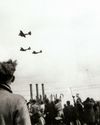
OPERATION MANNA
In late April 1945, millions of Dutch civilians were starving as Nazi retribution for the failed Operation Market Garden cut off supplies. eet as In response, Allied bombers launched a risky mission to air-drop food

GASSING HITLER
Just a month before the end of WWI, the future Fuhrer was blinded by a British shell and invalided away from the frontline. Over a century later, has the artillery brigade that launched the fateful attack finally been identified?
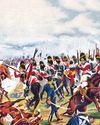
SALAMANCA
After years of largely defensive campaigning, Lieutenant General Arthur Wellesley went on the offensive against a French invasion of Andalusia

HUMBERT 'ROCKY'VERSACE
Early in the Vietnam War, a dedicated US Special Forces officer defied his merciless Viet Cong captors and inspired his fellow POWs to survive
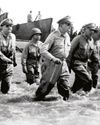
LEYTE 1944 SINKING THE RISING SUN
One of the more difficult island campaigns in WWII's Pacific Theatre saw a brutal months-long fight that exhausted Japan’s military strength

MAD DAWN
How technology transformed strategic thinking and military doctrine from the Cold War to the current day
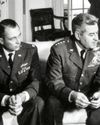
BRUSHES WITH ARMAGEDDON
Humanity came close to self-annihilation with the Cuban Missile Crisis, Broken Arrows’ and other nuclear near misses
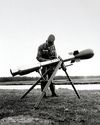
THE DEADLY RACE
How the road to peace led to an arms contest between the USA and USSR, with prototypes, proliferation and the world’s biggest bomb

THE MANHATTAN PROJECT
Einstein, Oppenheimer and the race to beat Hitler to the bomb. How a science project in the desert helped win a war